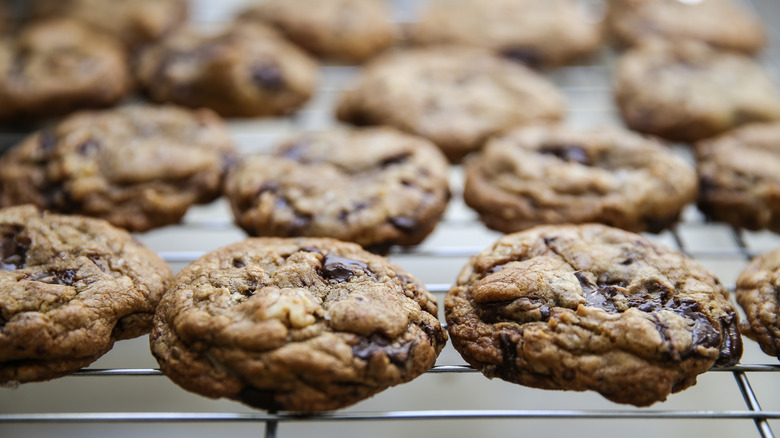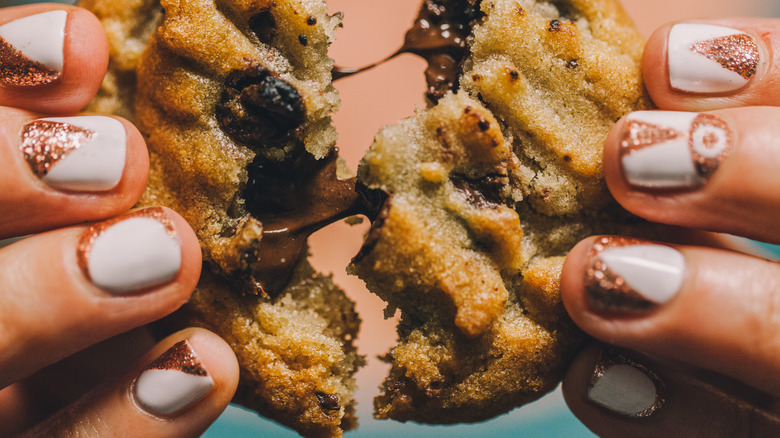The Reason Ree Drummond's Cookies End Up Gooey Every Time
If you're making chocolate chip cookies or any sort of melty sweet like caramel or butterscotch chips, an ooey-gooey texture is the most coveted outcome. Fresh out of the oven, the best cookies melt in your mouth as soon as you sink your teeth in them, and even when they cool, they're still ultra-soft and decadent. Whether you prefer your cookies like this or more firm, it's usually the ratios of the ingredients that have the most influence on the texture.
For example, if you want cakey cookies, Baking Bites says you'll need to add more eggs. On the other hand, thin crispy cookies need more sugar, while chewy ones require melted butter instead of softened butter. As for cookies that are crunchy and crumbly on the outside, more baking soda is the key. But what about soft, gooey cookies? Well, according to Ree Drummond, it's not so much the ingredients that impact your ability to create the perfectly soft and gooey construction as it is the baking temperature and time.
How Ree Drummond makes gooey cookies
Most chocolate chip cookie recipes call for a baking time of somewhere between 12 to 15 minutes. Many bakers probably think this gives the cookie enough time in the oven to solidify, but also isn't so much that you'll wind up with burned cookie dough. That's normally a pretty good rationale. However, to accomplish the most optimal gooey texture, Ree Drummond suggests something slightly out of the box.
Instead, Drummond leaves her chocolate chip cookies in the oven for only 9 to 11 minutes, intentionally underbaking the delicious treats so that they are "barely done, but still soft and chewy" (via The Pioneer Woman). No later than the 11-minute mark, Drummond quickly begins transferring them to a wire rack where they can fully cool.
The reason this works so well, Southern Living explains, is that the cookies still continue baking when they're out of the oven due to the residual heat of the pan. Although most bakers likely assume that the work is done once they open the oven, the pan actually stays sufficiently hot for up to two minutes after. As a result, your cookies are still technically baking after the 9 to 11 minutes in the oven, just at a somewhat lower temperature. As long as you don't take the cookies off the pan right away, they'll be able to finish baking until they're perfectly gooey.
The difference between gooey and raw
Of course, there's a fine line between a gooey cookie and a raw one, so Ree Drummond doesn't just rely on a timer to tell the difference. Her best advice, as she shared in her blog, is to "take them out of the oven when you're not 100% sure they're done." Southern Living also suggests using smell as an indicator, but arguably the most reliable indicator is appearance.
While cookies are usually removed from the oven when their tops are dry, Cook's Illustrated says that gooey cookies should look more on the raw side. You'll see moisture within the cracks, and the only sign of doneness should be around the edges of the treat. If you're still not sure based on these visuals, the publication recommends doing a spatula test. Simply run a spatula underneath the cookie, and if it's limp, it's ready to take out. After a couple of minutes of cooling in the pan and on a rack, you should be left with a batch of gooey cookies.


